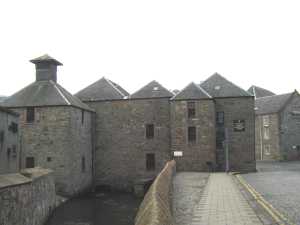

|
|||||||||
|
|
|
|
|
|
|
|
|
|
|
|
February 15th 1150 |


|
Perth Town Lade
Perth Lade The extent of the lade is quite remarkable, starting from Almondbank about four miles from the city. Here there is a sluice regulating the flow of water from the River Almond. The sluice is supported by an embankment of masonry known as Low’s Work. This might refer to the original builder but more probably the title comes from the Gaelic words for water works. It was very well constructed and was carefully maintained and repaired by the Burgh through the centuries. There are a number of conduits leading from the lade which at one time powered water wheels. As the lade approaches Perth there is a pipe leading towards Balhousie, which was constructed to allow the Laird of Balhousie to grind corn. However, the main mills, the City Mills, were constructed on the site of the present City Mills Hotel. The upper mill can be seen from within the Hotel, the lower mill has now been restored as a craft and working mill. Originally, the confines of the old walled town were immediately within the rectangle consisting of Mill Street, South Methven Street, Canal Street and the Tay. This was where the lade flowed and still flows. Indeed, it was not until the middle of the last century that the lade was covered over after leaving the City Mills. The main passage enters the Tay near to Smeaton’s Bridge and may be readily seen from the bridge. The other branch enters the Tay beyond the Queen’s Bridge and at one time small boats used the lade to transport coal from the Coal Shore beside the Tay, into the town. Other boats from the City Mills were used to move flour from the mills. By the end of the 18th Century, the lade was being used in more and more ways. “Now besides driving the wheels of the flour mills it supplies the tables of the inhabitants. It were most devoutly to be wished that the water from the latter use was procured from a different source. That of the town’s aqueduct has no unwholesome property but is so liable to be contaminated by the poisonous liquids that are used in the bleachfields and printfields through which it passes that the use of it is frequently dangerous. But although this damning reason did not exist, the circumstances of it being rendered so excessively turgid by the slightest rains, would operate decisively with magistrates who are desirous of satisfying the demands of utility before they studied adornment.” The obvious deficiencies of the lade as a supply of drinking water were finally addressed by the Town Council who commissioned Dr Anderson to develop a more satisfactory supply from the Tay. The new waterworks were opened in 1832. There is a pathway beside the lade running from Almondbank almost to the City Mills and in the days of the old Town Council there was an inspection and walking of the lade each summer, culminating in strawberries and cream for the City Fathers at Huntingtower. Today the path is overgrown in some places but could, with upgrading, become a very attractive walkway. |

